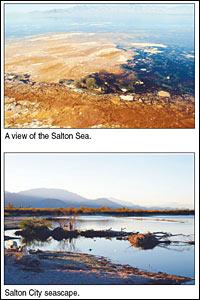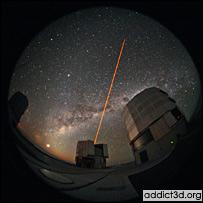Solar eclipse coming soon - for the lucky ones

From
USA Today:
Amateur and professional astronomers from around the world will soon be congregating in parts of Brazil, Africa, and western Asia, to view a total eclipse of the sun that will take place on Wednesday, March 29. Without a question of doubt, a total eclipse of the sun is one of the most spectacular natural sights that one can witness.
...
Contrary to popular belief, a total eclipse of the sun is not a rare or unusual spectacle.
In fact, over the past 25 years there have been no fewer than sixteen total solar eclipses, an average of one roughly every 18 months. The regions from where the spectacular sight of a totally eclipsed sun can be seen, however, are strictly confined to a narrow track; the path that the dark central shadow of the moon (called the "umbra") traces out over the Earth's surface. That track may run for thousands of miles, yet may average less than a hundred miles in width. So while the dark lunar shadow might sweep over the Earth twice over a span of just three years, for a specific geographical location, the odds of lying directly in the path of that shadow is very small.
So, if you intend to wait for this, the greatest of celestial road shows to come to your hometown, your wait is likely to be (on average) about 400 years. That is why many dedicated eclipse watchers – sometimes referred to as "umbraphiles" – will literally chase total solar eclipses around the globe. All for the privilege of "basking in the moon's shadow" for a few precious minutes
...
Pentax pumps precipitation proof products
A
press release reports:
(GOLDEN, CO) March 25, 2006...Nothing screams "take me with you" quite like the line of PENTAX Optio waterproof digital cameras. So, that is exactly what world-class surf champion Kelly Slater and his friends did when they convened recently for the second annual Kelly Slater Invitational (KSI) surfing event on the beautiful coast of Kona, Hawaii in February 2006.
Every year, KSI brings together pro surfers, Hollywood celebrities and musical guests for a weekend of surf, sand and sun. Equipped with PENTAX waterproof Optio W10 digital cameras, the official camera of the event, professional photographers and celebrities alike snapped images of the activities. With the capability to capture images up to five feet underwater for up to 30 minutes, the Optio W10 is the perfect camera for use in and around water.
...
Homemade telescopes

An
article at NCTimes.com discusses making your own telescope mirror:
Grinding and polishing a homemade telescope mirror takes a certain determination, especially when it's possible to buy telescope parts online or at a nearby specialty shop.
Carpenter Peter De Baan said it took him a year, working off and on, to make his first mirror.
The process consists of taking a glass disk and rubbing it by hand over the surface of a mold or "tool" covered with jewelers' polish. Periodically, the polisher adjusts his work by forming a test pattern with light reflected from the mirror.
Although the mirrors do reflect enough to check their shapes, it is not possible to see through them. They don't become silvery until the mirror-maker sends the finished glass off to a commercial service to be covered with aluminum.
De Baan hosts an informal mirror-making class that meets on Saturday mornings at his magnificently cluttered workshop in Escondido, close to Highway 78.
...
Sparking the interest of kids

Normally I'm not a fan of McDonalds nor the hyper-commercial promotions of fast food companies, but
here are some things that would have been a lot of fun for me at that age:
Among the Spy Gear gadgets (pictured above) being offered through the McDonald’s program are: The Agent Specs, stylish sunglasses that feature a yellow scope and red light for spotting distant clues in the dark; Spy Defender, a door trap that protects spy headquarters by launching discs to ward off intruders; Spy I.D., a retractable identification badge with decoder window that reveals a secret spy tongue twister; Spy Motion Sensor, an alarm unit with pulsing red light beam that triggers a warning sound when movement is detected; Spy Multi-View, a surveillance device that lets kids view suspects through red, green, or kaleidoscope vision; Spy Wire, a wrist cuff connected to a red finger-light that allows young agents to communicate by flashing secret codes; Spy Wrist Viewer, worn like a watch, it conceals a spring-loaded lid with magnifying lens and confidential 3-D cards; and the Global Spy Positioner, a GPS-themed tool used to track private paths on a hand-held screen (and comes with multiple maps depicting the fictional city featured in the Spy Gear Adventures book series recently launched by Simon & Schuster).
Back from vacation
We took a brief trip and are now back...updates to resume!
Thanks, Google!

Today I tried
Google Mars, and while it can't keep my attention as long as Google Earth, it's quite entertaining for a few minutes. I liked their search logo today so much (telescope theme) that I put it on the bottom of Smallscopes--permanent for now.
Binoculars defined for the...myopic?
Presented for your amusement, or education if you really, really don't know much about binoculars, is this
introductory piece:
Binoculars Binoculars are actually two telescopes placed side by side so a viewer can see through them with both eyes. Unlike monoculars which is one small telescope and can only been seen through using one eye. The advantages of using binoculars over monoculars are:
1. Both eyes can see comfortably through both lenses with having to squint one eye to see.
2. Binoculars provide three dimensional images that have more depth. Two views are drawn together to make one total picture and allow the viewer to see things at some distances up close and personal.
3. Binoculars are just more comfortable to look through and hold steady because both hands are usually used.
...
Hidden in plain sight

Remember that it's possible to find things to observe in
unexpected places:
Gotham is a vertical city. We go up, and up, and up. So many of our buildings go up so high that we've learned to just not see them. It's gotten to the point where our buildings are so tall that many New Yorkers, especially the transplants (yeah, you heard me), think it's not "cool" to look up! Which is patently retarded since there is some crazy ass shit hidden up in them there buildings.
Stargazing leads to murder!!!
Here's a
freak case from Canada, where a minor dispute turned ugly:
...
Crown prosecutor Dave King said Gill stabbed Garavellos out of anger as a result of disparaging remarks made earlier by the victim, and that Gill knew the stabbing would either kill Garavellos or seriously harm him.
Court heard the confrontation started when Garavellos — who was driving with his friend Steve Medeiros — shouted something like, "Hey you guys looking at the stars, you f---ing geeks" at Gill and two friends as they took turns looking through a telescope from the side of the road.
No surprise that road rage gets out of hand.
Free webhosting for optics topics
A
press release tells the story:
Woodland Hills Camera and Telescope, today announced that it is offering free web hosting to individuals and organizations promoting astronomy, birding, photography and general optics in their new 'Hosting Grant' program.
"Our 'Hosting Grant' program is aimed at individuals, organizations or clubs who are developing educational information to those topics of interest to our customer base. Its our way of promoting and thanking those people who promote the activities that promote us," said Tom Stamm, Director of Hosting Grant program.
"We will host the sites from our own Linex server and will include email, database and programming services. We have seven websites already up from our pilot program and now feel ready to allow general applications for Hosting Grants," Stamm continued.
What is it?

From
North Carolina. Click through to read some guesses!
Nature watching at the Salton Sea

A story on the
Salton Sea discusses what there is to see and its interesting history:
The Salton Sea shimmers in the sun, brown foam and white bubbles skimming its surface. At 367 square miles, the inland lake is the largest in California and offers more than its share of natural beauty. A recent field trip sponsored by the San Bernardino County Museum and led by its director Bob McKernan proved to be a stellar day of education, bird-watching and lake looking up close and personal.
We set out from the museum at the early hour of 7 a.m., many of us still rubbing the sleep from our eyes. But the two-hour drive to the sea, located southeast of Indio, gave our two vanloads of passengers a chance to catch a few winks and fortify ourselves for the day¹s activities.
Along the way, McKernan, a trained biologist, pointed out the local mountain ranges in between which the Salton Sea nestles and explained the lake¹s importance as a vital link for migratory waterfowl and shore birds along the Pacific Flyway.
...
He pointed out the shoreline markings of an ancient lake, known as Lake Cahuilla, on the rocks above the current sea. In 1853, a geologist surveying the area for a transcontinental railroad found these watermarks and other evidence pointing to a pre-existing body of water in what was then a dry basin. Indigenous peoples told him that a large lake filled with fish and birds had filled the valley before a cataclysmic flood drove them from their homes.
"Lake Cahuilla was filled with fresh water for thousands of years, but started drying up about 400 years ago," McKernan said. The sink area lay dry for many years until the current Salton Sea was created by accident. In 1904, a temporary levee along the Colorado River was breached, filling the Salton basin with flood waters. Water continued to flow into the area until 1907. The name Salton Sea, derived from the high saline content of the lake, was first used in 1905, researchers say.
Negative impact of light pollution
Another story discusses the negative impacts of light pollution on stargazing, energy waste, and providing false security:
Galileo, with his 40-power telescope, could see stars that a 100-power telescope could only make out as a blur.
"He didn't have any light pollution," said Anthony Goodyear, an astronomy teacher at Parkside High and director of the school's planetarium. "He didn't have to worry about street lights."
...
There is a common misconception about lighting, said Bob Gent, vice president of the board of directors for the International Dark-Sky Association.
There is nothing to be afraid of when it's dark.
"Why do we want to turn night into day?" he asked. "We need to preserve the beauty of the night."
Bright lights are sometimes used to deter criminals and make the roads easier to navigate. People believe the more light there is, the safer they will be, Gent said.
But, Gent said, they're wrong.
Instead, bright lights cause more harm than good.
...
Not only is much of the light pollution wasteful in terms of energy but often times the lights reach a point of being too bright.
"It makes the darker areas darker," she said. "It makes the surrounding areas less safe."
Crime isn't the only issue. Driver safety is also a concern.
"Some of the lighting along the street is so bright it attracts the eyes," she said. "That's the opposite of what you want. You want people's eyes on the roads."
As much as I'd like to have darker skies sometimes (there's a terrible street lamp just outside), I just don't see society getting right of nighttime lighting anytime soon. The reality is that just a tiny fraction of society cares about watching the sky, and even they only do it occasionally.
Laser pointers work for stars too
 Apparently
Apparently laser pointers provide guidance for computerized telescopes. Too bad they add optical light pollution.











